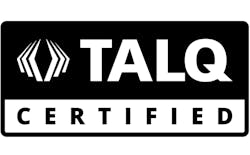Smart-city-focused Telensa has announced that it has successfully deployed the PLANet central management system (CMS) for connected outdoor solid-state lighting (SSL) over “hundreds of thousands” of street lights in Georgia. The installation covers luminaires and other nodes from multiple vendors and based on varying network connections — proving out the TALQ value proposition of interoperability in multi-vendor scenarios. Telensa has long been an advocate of TALQ and of smart city technology, although the company was acquired by Signify this past summer and Signify has its own proprietary smart-city offering in Interact City.
The utility Georgia Power was notably absent from the Telensa announcement that simply mentioned its milestone installation involved a “large US energy utility in Georgia” with the customer unnamed. Still, Telensa and Georgia Power have publicly revealed earlier work and partnership. Moreover, Georgia Power is the only utility in Georgia with hundreds of thousands of connected street lights.
Indeed, we have published a number of articles over the years mentioning the Georgia Power efforts in smart street lights. The utility has been a regular speaker at the Illuminating Engineering Society (IES) Street and Area Lighting Conference (SALC). After the 2015 SALC, we reported that the utility believed investments in wireless connectivity on each street light were justified by the way it made installation and commissioning a plug-and-play process. The utility also required GPS in its street lights and upon initial power on each luminaire would read the GPS location, read the luminaire specifics stored in the driver (model, wattage, etc.), and self-install over the wireless connection. The specified street lights also utilized DALI to link the driver and wireless controller long before the D4i intra-luminaire interface became an industry standard for smart luminaires indoors and out.
Meanwhile, the TALQ standard has been on a seemingly positive move of late. The consortium announced version 2.3 of the standard earlier this year. About a year ago, the list of certified TALQ products exceeded 20. And just this past summer TALQ made its protocol publicly available, although vendors will still have to join the consortium to have a product certified as interoperable. Essentially, the TALQ architecture separates the CMS from the network or the network of many networks. And a gateway on each network ensures reliable communication of commands and data.
“The announcement today effectively disaggregates the CMS from the underlying network technology,” said Telensa CEO Andy Gowen. “We expect PLANet to become the de facto interface for managing any number of smart networks and corresponding sensors and devices, confirming PLANet’s place as the industry standard CMS and the ideal launchpad for lighting and other smart city applications.”
What Gowen didn’t say is that the interoperable protocol means that down the road PLANet could be replaced relatively easily with another TALQ CMS. Really, that’s a good thing because utilities and municipalities will not be locked into one vendor at any level.
Beyond the hundreds of thousands of nodes claim, Telensa did not detail whether the PLANet deployment covers the complete street-light inventory at Georgia Power. Several years ago, the utility said it had installed around 300,000 connected luminaires. And projects at the time would push that number to a million nodes in the not-too-distant future.
The Telensa announcement marks one of the first major press releases from the company since Signify announced acquisition of the company back in July. At the time of the announcement, Signify said Telensa would continue operating under its existing brand and thus far that statement holds true.
At the time of that deal, Signify touted that Telensa would give it a lower-cost option to offer smart-city services alongside its fully Internet of Things (IoT)-capable Interact platform. That characterization may have had more to do with Telensa’s narrowband wireless network technology than the CMS. But the reality of the deal is at some point duelling CMS offerings may clash. Signify has been a member of TALQ at the associate level. And the company has said that Interact City would support TALQ, but the TALQ website does not list Signify as having a certified product at the time of this publication.
LEDs Magazine chief editor MAURY WRIGHT is an electronics engineer turned technology journalist, who has focused specifically on the LED & Lighting industry for the past decade.
For up-to-the-minute LED and SSL updates, why not follow us on Twitter? You’ll find curated content and commentary, as well as information on industry events, webcasts, and surveys on our LinkedIn Company Page and our Facebook page.






